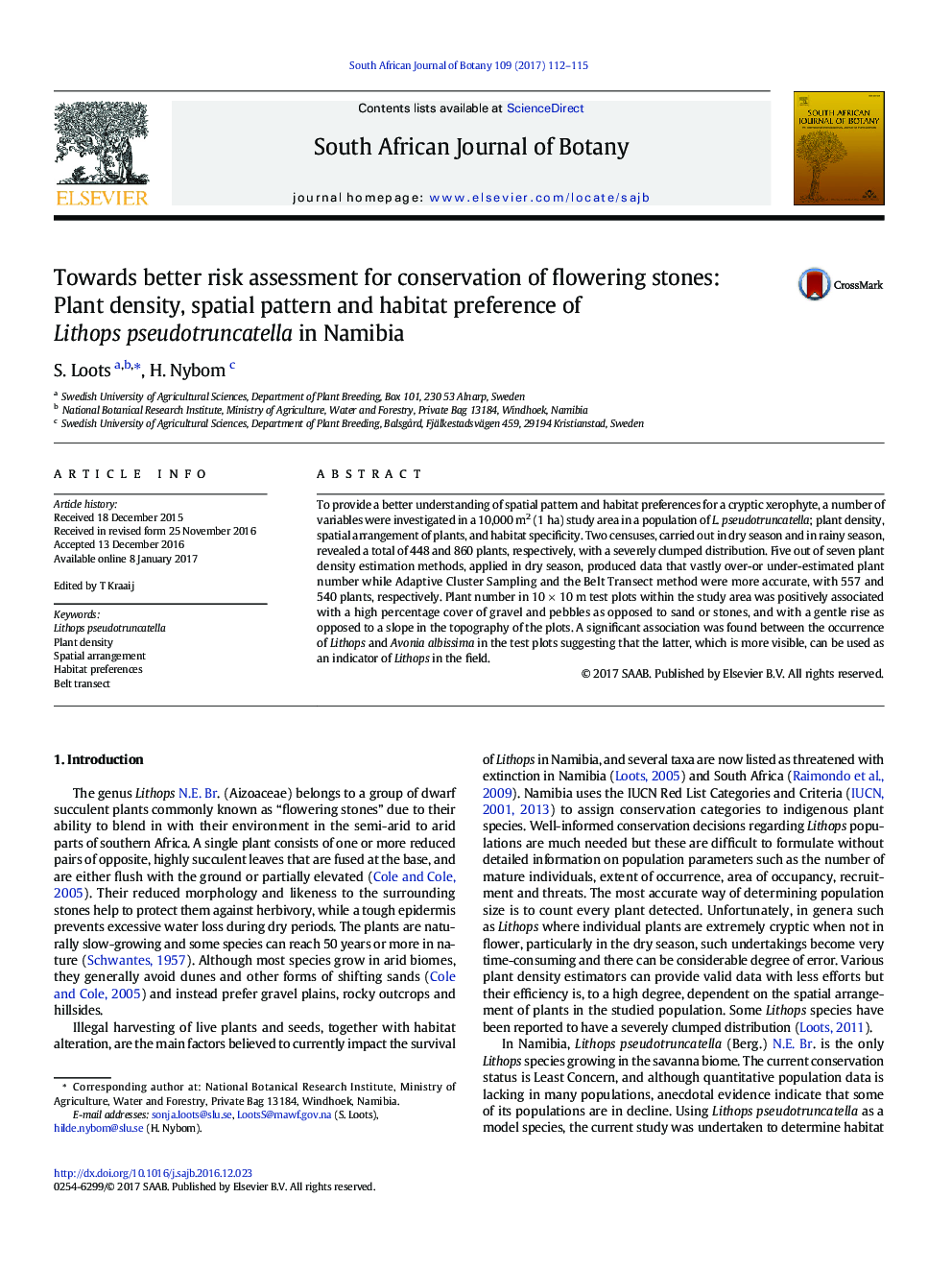| کد مقاله | کد نشریه | سال انتشار | مقاله انگلیسی | نسخه تمام متن |
|---|---|---|---|---|
| 5763061 | 1625149 | 2017 | 4 صفحه PDF | دانلود رایگان |

- In the studied population, plants occur in an extremely clustered pattern.
- The Belt Transect method was the most suitable for L. pseudotruncatella.
- Plant density positively correlated with percentage gravel and pebble cover.
- Avonia albissima could possibly be used as an indicator for Lithops.
To provide a better understanding of spatial pattern and habitat preferences for a cryptic xerophyte, a number of variables were investigated in a 10,000Â m2 (1Â ha) study area in a population of L. pseudotruncatella; plant density, spatial arrangement of plants, and habitat specificity. Two censuses, carried out in dry season and in rainy season, revealed a total of 448 and 860 plants, respectively, with a severely clumped distribution. Five out of seven plant density estimation methods, applied in dry season, produced data that vastly over-or under-estimated plant number while Adaptive Cluster Sampling and the Belt Transect method were more accurate, with 557 and 540 plants, respectively. Plant number in 10Â ÃÂ 10Â m test plots within the study area was positively associated with a high percentage cover of gravel and pebbles as opposed to sand or stones, and with a gentle rise as opposed to a slope in the topography of the plots. A significant association was found between the occurrence of Lithops and Avonia albissima in the test plots suggesting that the latter, which is more visible, can be used as an indicator of Lithops in the field.
Journal: South African Journal of Botany - Volume 109, March 2017, Pages 112-115